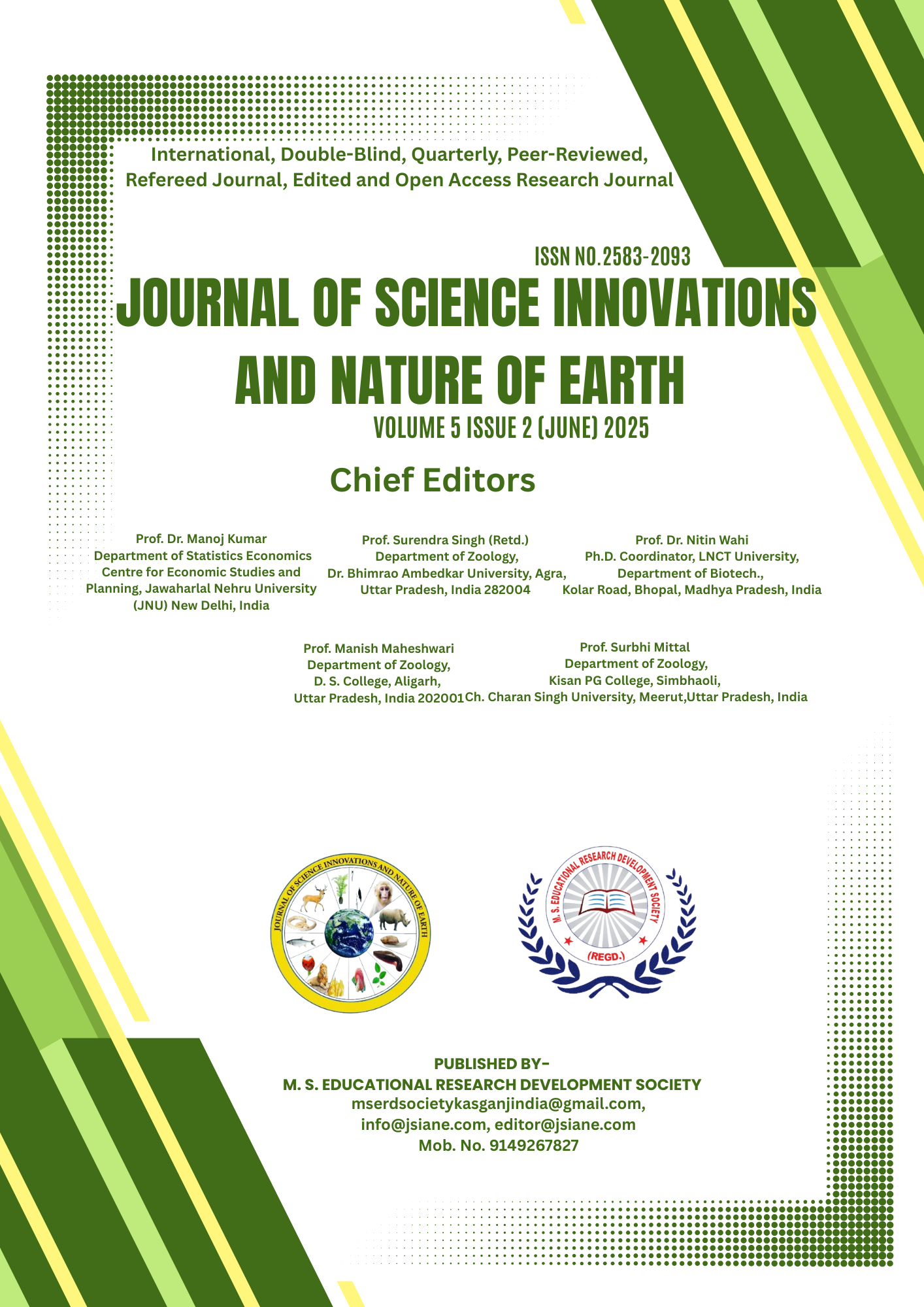DNA Barcoding of Indian Reptiles for Species Identification and Conservation
DOI:
https://doi.org/10.59436/jsiane.v5i218.2583-2093Keywords:
DNA barcoding, reptiles, species identification, conservation, biodiversity, Indian reptiles, molecular markers, taxonomyAbstract
India, with its vast and diverse ecosystems, is home to a rich array of reptilian species, many of which are endemic or threatened by habitat loss and other anthropogenic pressures. Accurate species identification is critical for effective conservation, but traditional morphological methods often face challenges due to cryptic species, overlapping features, and the vast diversity of reptile species. DNA barcoding, a molecular technique that uses a short, standardized DNA marker (typically the mitochondrial cytochrome c oxidase I gene), has emerged as a powerful tool for species identification, particularly in complex and poorly understood groups like reptiles. This study explores the use of DNA barcoding for identifying and classifying reptiles in India. By analyzing DNA sequences from a wide range of reptilian species across the Indian subcontinent, we aim to resolve taxonomic ambiguities, uncover hidden species diversity, and contribute to more accurate biodiversity assessments. The results highlight the effectiveness of DNA barcoding in distinguishing between cryptic and morphologically similar species, such as certain snakes, lizards, and turtles. Additionally, we discuss how DNA barcoding can enhance conservation efforts by providing reliable species data that are crucial for monitoring population health, protecting endangered species, and informing management decisions. The study also emphasizes the need for expanding India’s molecular reference database to improve species identification accuracy and strengthen conservation strategies. This research underscores DNA barcoding as a valuable tool for understanding and preserving India’s rich reptilian biodiversity, offering potential solutions to the growing challenges of reptile conservation.
References
Kumar, P., et al. (2023). "DNA barcoding and conservation status of reptiles in India." Conservation Genetics.
Chakraborty, A., et al. (2022). "Exploring the utility of DNA barcoding for cryptic reptile species in India." Molecular Ecology.
Singh, R., et al. (2022). "Assessing genetic diversity in Indian reptiles using DNA barcodes." Indian Journal of Animal Sciences.
Das, A., & Karanth, K. P. (2021). "Application of DNA barcoding for the identification and conservation of reptiles in the Western Ghats of India." Biodiversity and Conservation.
Gupta, A., et al. (2021). "DNA barcoding and species delimitation in Indian reptiles." Zoological Journal of the Linnean Society.
Patel, M., et al. (2020). "Genetic analysis and DNA barcoding of reptiles in India for conservation." Genetics and Molecular Biology.
Sundararaj, R., et al. (2020). "Molecular approaches for assessing reptile diversity in India: DNA barcoding and conservation implications." Conservation Genetics Resources.
Prasanna, J., & Natarajan, C. (2019). "DNA barcoding in reptiles: A tool for improving taxonomy and conservation of Indian herpetofauna." Herpetological Conservation and Biology.
Sharma, G., et al. (2019). "Use of DNA barcodes in identifying endangered reptiles of India." Journal of Environmental Biology.
Rao, S. S., et al. (2018). "The role of DNA barcoding in reptile biodiversity conservation in India." PLOS ONE.

Downloads
Published
Issue
Section
License
Copyright (c) 2025 Maharaj Singh Educational Research Development Society

This work is licensed under a Creative Commons Attribution-NonCommercial 4.0 International License.









